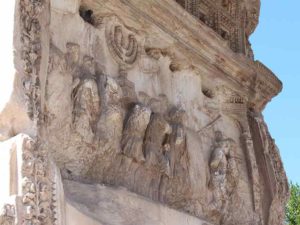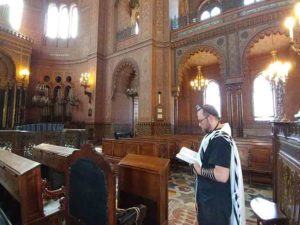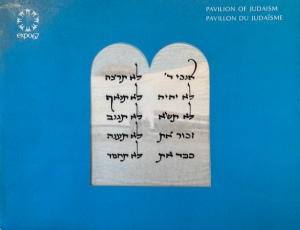When my wife and I began planning our honeymoon to Italy, we knew to set aside time for the usual tourist activities – marvelling at the Colosseum and Trevi Fountain in Rome, enjoying a peaceful sunset gondola ride in Venice, “propping up” the Leaning Tower of Pisa – but as Orthodox Jews, we also wanted to dedicate time for sights that would resonate more personally with us and our heritage.
We started in Rome, home to one of the oldest Jewish communities in the world, dating back to the second century BCE, when the Maccabees sent a delegation to strike an alliance against the Hellenistic empire under Antiochus IV Epiphanes. Evidence of ancient Jewish roots in the Eternal City can be found adjacent to the Colosseum in the Roman Forum, where the Arch of Titus sports a panel relief of a menorah and Jewish slaves being brought from Jerusalem to Rome after the destruction of the Second Temple.

The cultural highlight of our time in Rome was a walking tour of the former Jewish ghetto, which was established under a papal bull issued by Pope Paul IV in 1555. During the hour-long circuit of the four city blocks that comprised the restricted quarters, our guide pointed out the numerous churches where Jews were obligated to attend weekly mass.
The first to which she called attention, San Gregorio della Divina Pietà, bears a painting of a crucified Jesus and a passage from Isaiah in which God laments the stubbornness of the Jews. Its door also has two metal fixtures where a wooden crossbar would be placed, forcing the Jews to bow their heads as they entered.
While the ghetto’s buildings were demolished and rebuilt since the emancipation of Rome’s Jews in 1870 – now set back from the banks of the Tiber River to avoid the previously constant flooding – the area’s layout appears much the same.
The cramped high-rise tenements that housed as many as 10,000 people have been replaced with four main building complexes, including the Tempio Maggiore (Great Synagogue), a massive structure whose magnificent interior matches its impressive exterior. Located in the synagogue’s basement is the Jewish Museum of Rome, full of sumptuous textiles and ornate objects previously used for religious services in other shuls, many no longer in existence.
READ: WHAT I LEARNED BRAVING THE NORTHWEST PASSAGE
The Great Synagogue of Florence and the Jewish Museum housed within it are much the same as those in Rome, and while the décor is more subdued and intricate than the lavish, almost-gaudy furnishings on display in the Italian capital, davening in the cavernous shul felt almost as if I had been praying in a church.

After that experience and a general lack of communal Jewish life during our journey to that point, it was uplifting to be invited to a Friday night Shabbat meal at the local Chabad house. The dinner was simple, but filling, and we spent most of it exchanging travel stories with fellow tourists. Overall, it was just refreshing to share time with other Jews, sing zemirot and listen to a dvar Torah.
We likely would have had this opportunity in Venice, too, after receiving a generous offer to spend Shabbat free of charge in an apartment on the island. Unfortunately, we had just picked up our food for Shabbat from a nearby restaurant, and therefore thought it best to decline the kind offer and return to our hotel in Mestre, on the mainland just outside Venice.
The invitation also came after a day of viewing synagogues in Venice’s former ghetto on a tour operated by the city’s Jewish Museum.
Our unenthusiastic guide showed us three of the five shuls, each built in the 1500s following an edict in 1516 from the city’s chief magistrate, Doge Leonardo Loredan, instituting the restricted quarters.
Despite our guide’s lacklustre attitude, the synagogues were awe-inspiring, due to their age and the copious amounts of gold leaf employed in keeping with the classic Venetian style.
Though these shuls’ designs were rather ostentatious, they still felt more familiarly Jewish to me because of their less-grandiose scale.
Italy is home to a modest Jewish population, measuring only a fraction of the size of Toronto’s community, but – like much of the country – it is steeped in history and its sights are well worth a visit.







